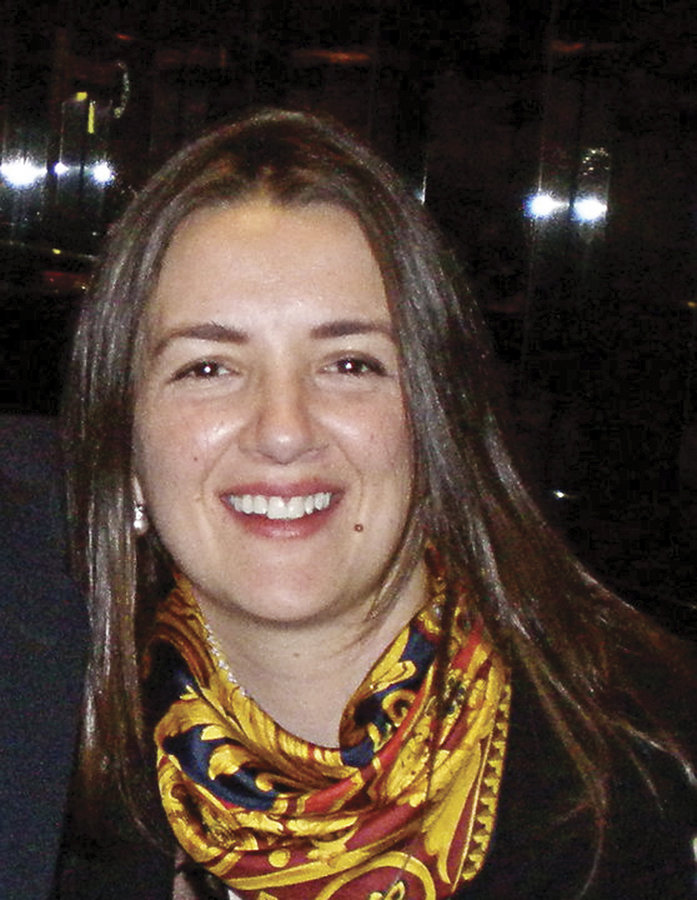The Museum of Russian Art in downtown Jersey City is holding an exhibition of Oksana Prokopenko’s work from Nov. 12 to 20. The opening reception is from 5 to 7 p.m. on Nov. 12.
The museum will feature mixed media and glass micro-mosaics of the artist, who has a background in iconography, the painting of icons. Prokopenko works primarily with stained glass.
Creating powerful images
“I put images together in tiny little pieces,” said Oksana Prokopenko. “It is a reflection of how everything is temporal [enduring for a certain time]. Even though we are temporal we are still filled with divinity. These little pieces come together and form this powerful divine image.”
“The soul of Prokopenko’s work is in her walking that fine line between the transcendent and the ordinary.” – Margo Grant
____________
Some of her work may include up to 40,000 pieces of stained glass and can take anywhere between six months to two years to create.
Contemplative works
“The iconography requires a tremendous amount of concentration,” said Prokopenko. “You sit in meditation [and] you contemplate the work.”
She said iconography is a spiritual practice that encourages growth but can be strenuous at times, which is why she also paints and creates mixed media on the side as another outlet for expression.
The museum acquired Prokopenko’s dyptic paintings, titled “The Wisp of Red Realities,” which will go into their permanent collection and will be on view during the exhibit.
“Prokopenko’s deft treatment of energy and emotion is apparent in her twin red delight,” said Margo Grant, MORA director, about the exhibit. “The soul of Prokopenko’s work is in her walking that fine line between the transcendent and the ordinary.”
An ancient practice
Prokopenko adheres to an ancient iconographic tradition along the lines of El Greco, a trained iconographer also known for his paintings of Spanish kings. She names El Greco as a major influence.
She was first exposed to iconography when her grandmother would secretly take her to Sunday masses during a time when religion was outlawed in the former Soviet Union, where she was born.
“It was enchanting and inviting,” said Prokopenko. “Russian Orthodox [iconography] has this mystery and quiet beauty to it.”
Of Russian and Ukranian descent, Prokopenko began painting at an early age.
“I have always been interested in art and in creative expression,” said Prokopenko.
Her father was a physicist but his passion was painting and he created watercolors.
She began “writing” icons, the technical term, in traditional egg tempura and moved on to using Venetian glass, or “smalti” – specialized mosaic glass. She studied the theory of writing and traveled to Italy, Greece, and Turkey to visit cathedrals for further exposure to iconographic works of art.
She arrived in the United States 15 years ago and studied psychology and Fine Arts at NYU. She also studied at the School of Visual Arts and the Theological Seminary where she received a more serious background in iconography.
Prokopenko divides her time between Upper Saddle River and New York City. After the exhibit at MORA, she will exhibit in New York City at the Narthex Gallery at Saint Peter’s Church from Dec. 2 to Jan. 8, with an opening reception on Dec. 15 from 6 to 8 p.m.
MORA is located in the historic district of Jersey City on 80 Grand St. For more information, contact Margo Grant: (917) 449-2842 or call the museum: (201) 332-9200.
Adriana Rambay Fernández may be reached at afernandez@hudsonreporter.com.
